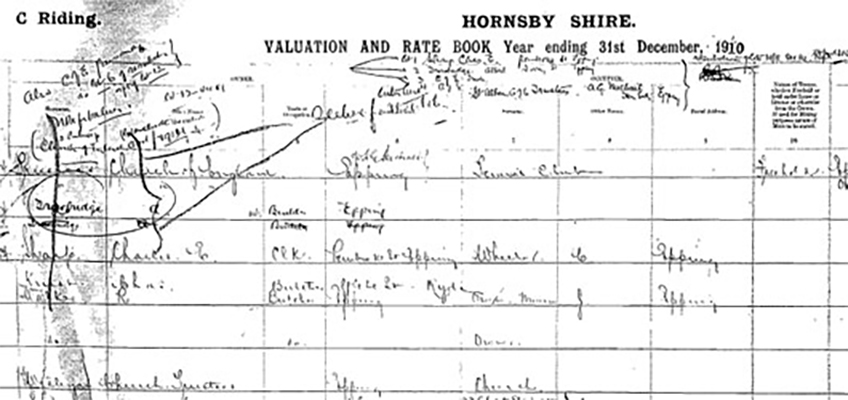Council Rate Books 1907-1913

Hornsby Shire Council’s Rate Books are core documents that were useful in their day and are now invaluable to historians.
What are the Rate Books?
They are a record of all the land in the Shire and who owned it, for the purpose of figuring out how much each person needed to pay in rates.
What is their value to historians?
They help trace the growth and development of the Shire, as well as define the boundaries of early localities.
For family historians they are particularly valuable, as they allow you to pinpoint the location of your ancestors at a certain time, as well as their occupation and sometimes whether or not they could afford to pay their rates.
View the Rate Books
View a spreadsheet of the 1907-1909 Council Rate Books
View a spreadsheet of the 1910-1913 Council Rate Books
View the original 1907-1913 Council Rate Books
How can I access Rate Books from other years?
The Rate Books from 1907 to 1980 are available on microfilm at Hornsby Library. Please contact the Local Studies team on 9847 6807 to make an appointment.
How can I use the Rate Books?
The books are laid out geographically. The left hand page has four main printed headings of Assessment Number, owner, occupier and situation. The right hand page gives the size of the property, together with the unimproved and improved capital value.
Below is an explanation of the information:
Assessment Number: This number commences at number 1 in the A Riding Rate Book and continues to the end of the C Riding Rate Book. These numbers are fixed and sequential.
Owner: This gives the name, occupation and postal address of the property owner.
Occupier: This gives the same information as the previous column and is only used when the land’s occupier is not the owner.
Situation: This gives the street, road or subdivision in which the property is located. Sometimes two streets are given if the property is on a corner.
Dimensions of Land: This tells you how big the property was, using measurement terms from the time such as acres, roods and perches.
Unimproved Capital Value: This is an assessment of the land value before any buildings or other development took place on it. If the landowner appealed the initial assessment, there is a column for the new assessment to be added.
Improved Capital Value: An assessment of the land value after it has been developed. If the landowner appealed the initial assessment, there is a column for the new assessment to be added.
What are the ridings?
When Hornsby Shire was gazetted in 1906 it was subdivided into three ridings for administrative purposes. The ridings were named simply A, B and C from north to south. Click here to see the ward boundaries.
Who created the Rate Books?
William Willis King, who signed each of the pages. He was an orchardist at Berowra until 1907 when he became the Shire’s first rate collector.







